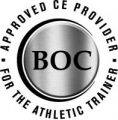Positional Release Therapy: An Evidence Based Update

ABSTRACT
In this online introductory course, participants will be introduced to the evidence and theory supporting the use of positional release therapy (PRT) for a wide-variety of medical conditions. Positional Release Therapy (PRT) also known by its parent term, Strain Counterstrain, is a form manual therapy that resolves pain and somatic dysfunction. Through positioning the body and tissues in positions of comfort, the neurological system can be manipulated to interrupt the pain spasm cycle and over time, to reset the resting length of tissue in a "normal" range, which promotes a reduction in pain, increase in strength, range of motion, performance and function. Essentially, PRT is the opposite of stretching. Much like unkinking a knot from a chain necklace, PRT works in the same fashion; tissues are pushed together, twisted, compressed and manipulated to take tension off vessels and nerves. The therapy is pain-free and is suited for all ages and most painful conditions and only requires the hands. The primary goal of PRT is to promote a positive healing environment by correcting musculoskeletal and neurological imbalances to facilitate tissue regeneration, growth, and repair in order for the body to self-correct itself.
COURSE OBJECTIVES
At the completion of the course, participants should be able to:
1. describe the Mechanical Coupling Theory
2. articulate how the supporting evidence of the Mechanical Coupling Theory is applicable for application of PRT for somatic dysfunction
3. list at least 3 differences between PRT and Strain Counterstrain
4. recall at least five clinical implications and contraindications of PRT
5. be able to articulate at least two ways how PRT can be integrated into a treatment plan for somatic dysfunction
Purchase the associated textbook: Clinical Guide to Positional Release Therapy.
Student Price: $29.95
Register Here



